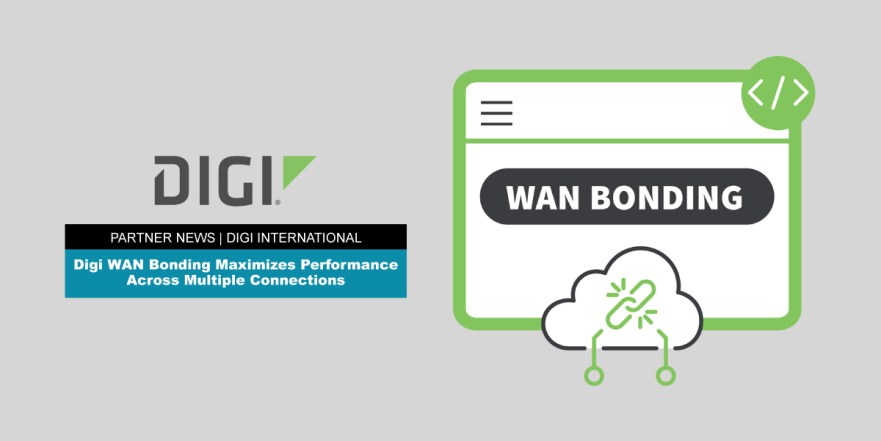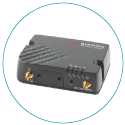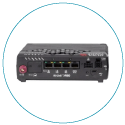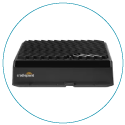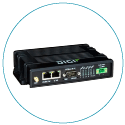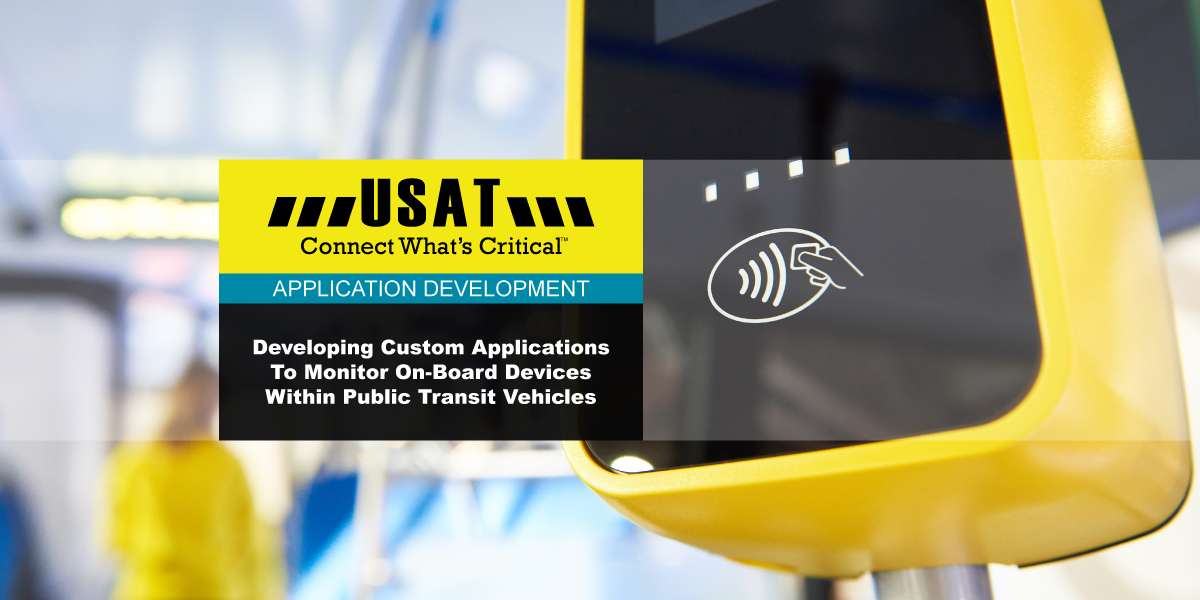What is WAN Bonding?
The world's growing reliance on technology for communication, commerce, and collaboration requires a dependable and secure network connection for businesses and organizations of all sizes to stay competitive in the digital age.
WAN bonding, a technology combining multiple wide area network (WAN) connections into a single high-performance link, is vital in helping organizations achieve enhanced network performance, reliability, and redundancy. It empowers organizations to leverage multiple Internet service providers (ISPs) to achieve greater bandwidth and reduced latency. With the right equipment, configuration, and maintenance, organizations can reap the benefits of WAN bonding, staying connected despite network failures or other challenges.
Digi WAN Bonding
Wireless communication's inherent disruptions can be challenging when using multiple cellular connections across a network. Digi WAN Bonding enhances network resilience by aggregating multiple connections to maximize speed and throughput and reduce latency, even in dynamic mobile environments. It also effectively merges both cellular and wired connections to provide the lowest latency among bonded interfaces, ensuring seamless handover and delivering throughput equivalent to the cumulative interfaces.
Digi WAN Bonding offers an easy-to-implement solution available as an add-on service to a Digi Remote Manager® (Digi RM) premium license - a robust cloud-based platform orchestrating connectivity and management of Digi device networks. Through Digi RM, Digi WAN Bonding can be effortlessly integrated through a central portal, enhancing network connectivity. Digi RM simplifies device and network management through its proven cloud-based platform, offering centralized control and monitoring from any location.
Built-in Capabilities with DAL OS
Digi devices come with DAL OS, featuring a set of built-in software capabilities within the firmware. These capabilities adhere to Digi TrustFence®-approved standards. When WAN Bonding is enabled in Digi Remote Manager and WAN and WWAN interfaces are combined, traffic is routed through the WAN Bonding application, effectively managing data transmission and ensuring optimal performance.

Packets are sent to a virtual private server (VPS), recombined, and forwarded. Replies are sent through the most performant and unsaturated interface, guaranteeing reliable communication even in challenging network conditions.
How WAN Bonding Works
WAN bonding software manages the process of uniting multiple WAN connections into a single virtual connection, which is then used for routing network traffic, ensuring proper traffic distribution across diverse connections. The bonding process encompasses three key components:
Bonding Multiple WAN Connections
The first step involves combining multiple WAN connections into a single virtual connection, a task facilitated by WAN bonding software that oversees the bonding process and efficient traffic distribution.
Traffic Routing and Load Balancing
After bonding WAN connections, the software routes network traffic across them to maximize network utilization and performance optimization.
Failover and Redundancy
WAN bonding also provides failover protection, wherein if one WAN connection fails, the others take over promptly, preserving network operation and minimizing downtime.
Types of WAN Bonding
Link Aggregation (LAG)
LAG involves combining multiple physical network connections into a single logical link, commonly employed in local area networks (LANs) to boost bandwidth.
Link Load Balancing (LLB)
LLB distributes network traffic across multiple connections to reduce congestion and heighten overall network performance.
Bonding using VPN
VPN bonding merges multiple VPN connections into a single link, a valuable solution for businesses needing secure connections between remote offices or branch locations.
Cellular WAN Bonding
Cellular WAN bonding combines multiple cellular connections into a single virtual connection, ideal for businesses requiring secure and reliable mobile connectivity, such as field service organizations or remote workers.
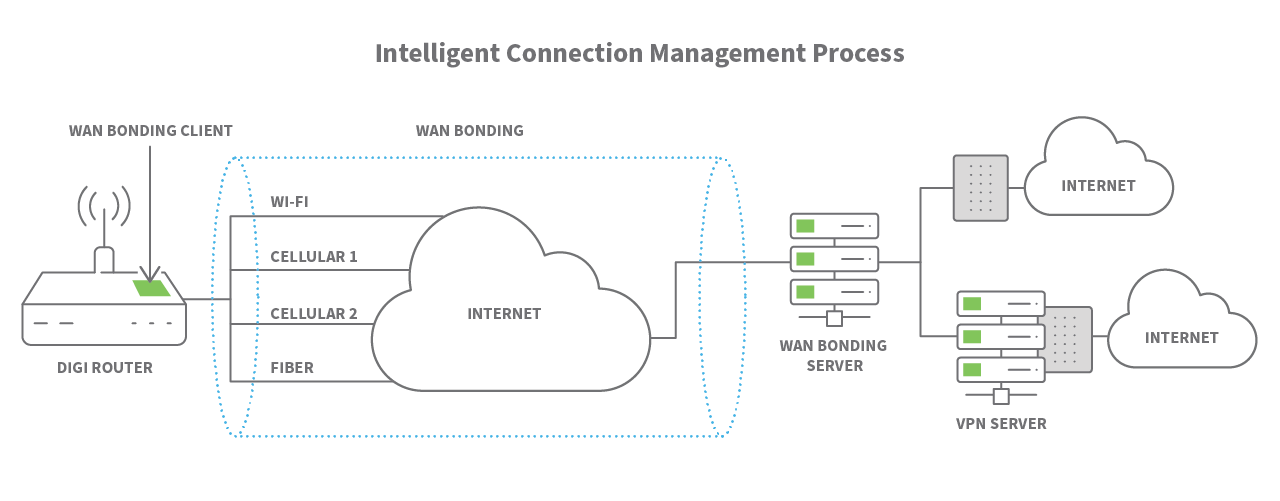
Implementing WAN Bonding
Implementing WAN bonding requires meticulous planning, appropriate equipment, and software. The key elements to consider during implementation are:
Equipment and Software
Implementing WAN bonding necessitates WAN bonding devices or software. These solutions range from hardware-based options to cloud-based software solutions.
Network Design and Topology
Designing network topology carefully is vital for effective WAN bonding implementation. This includes determining the number of WAN connections, WAN bonding device placement, and traffic routing between connections.
Configuration and Setup
After establishing equipment and network topology, the next step involves configuring and setting up the WAN bonding device or software. This includes specifying WAN connections, configuring routing and load balancing settings, and implementing failover protection.
Maintenance and Troubleshooting
Routine monitoring and maintenance are crucial to ensure optimal WAN bonding performance. Troubleshooting plans should be in place to swiftly address any issues that may arise.
Benefits of WAN Bonding
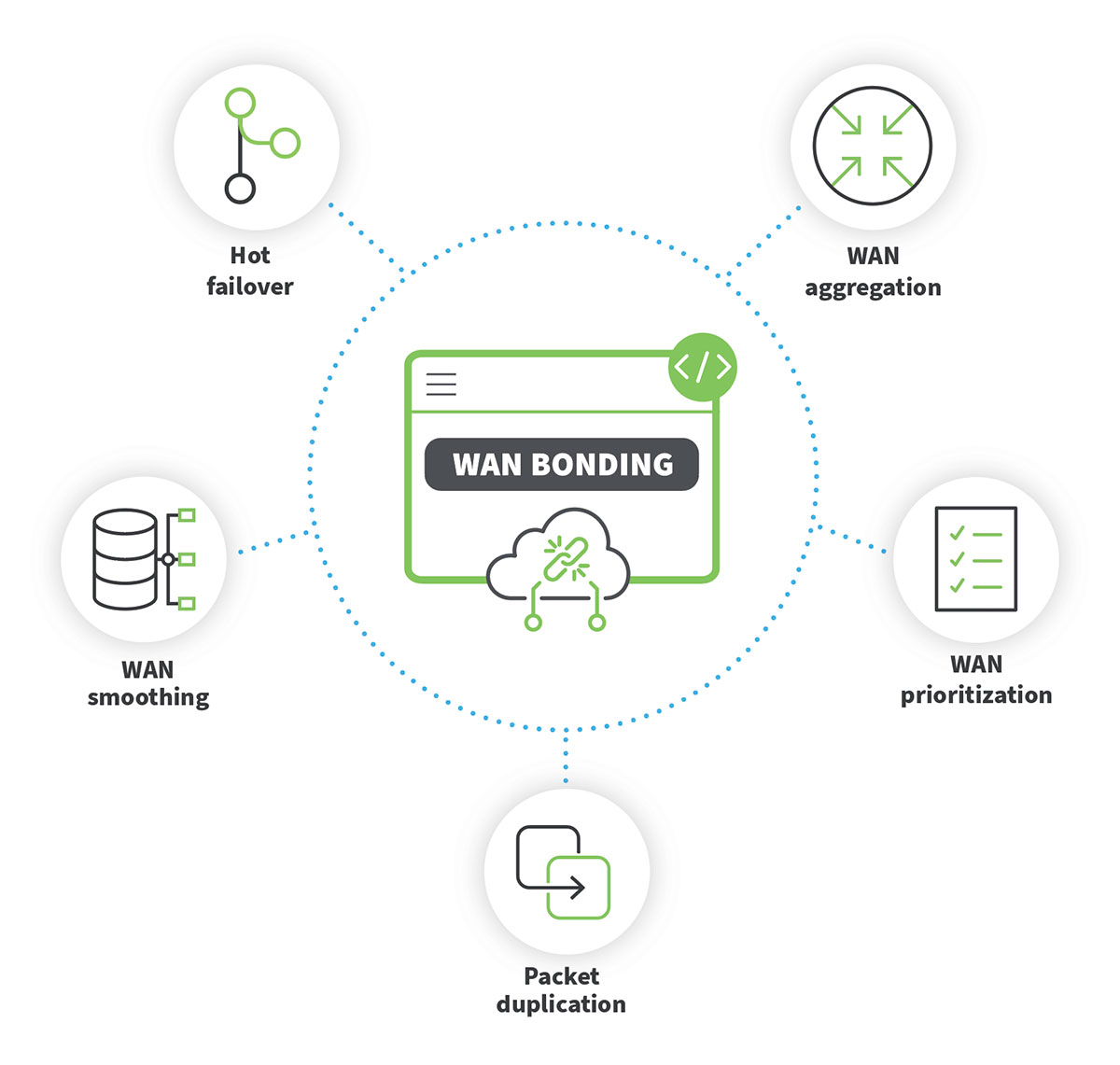
Enhanced Network Performance
WAN bonding elevates overall network bandwidth and speed, which is especially advantageous for businesses that depend on high network performance for activities like video conferencing, online gaming, and data transfers.
Increased Reliability
If one WAN connection falters, WAN bonding provides failover protection, ensuring that other connections immediately take over. This results in a more dependable network and minimizes downtime.
Cost Savings
Utilizing WAN bonding allows organizations to harness the capabilities of multiple ISPs, potentially resulting in cost savings. By engaging with multiple providers, businesses can negotiate better pricing and choose the provider that best aligns with their specific requirements.
WAN Aggregation
Multiple WAN links are combined to achieve enhanced speed and bandwidth for one or multiple devices, up to a maximum of 1 Gbps.
WAN Smoothing
This feature reduces latency and jitter by simultaneously transmitting data through multiple channels, ensuring packet loss is minimized and connection resiliency is maintained.
WAN Prioritization
Digi WAN Bonding can automatically detect or be manually configured to use the best active WAN link, efficiently balancing traffic.
Simple Integration
Digi WAN Bonding is easily deployable on various Digi enterprise (EX), industrial (IX), and transportation (TX) routers, catering to both public and private environments in fixed or mobile locations, all managed via Digi Remote Manager.
Increased Throughput
Digi WAN Bonding offers subscription options with maximum throughput capacities of 100 Mbps, 200 Mbps, and 1 Gbps.
Use Cases for WAN Bonding
Remote Offices and Branch Locations
Businesses with remote offices or branches can significantly benefit from WAN bonding, as it provides a high-performance, reliable network connection for their remote employees.
Cloud Connectivity
WAN bonding enhances cloud connectivity by ensuring that cloud-based applications and services remain accessible and responsive even in the event of a connection failure.
Backup and Disaster Recovery
WAN bonding is a robust solution for supporting backup and disaster recovery plans, ensuring network continuity during failures or disasters.
High-Bandwidth Applications
Businesses requiring high-bandwidth applications like video conferencing, online gaming, and data transfers can harness WAN bonding to meet their bandwidth and performance needs.
Connectivity on Trains and Buses
WAN bonding aids transportation authorities in achieving faster Internet speeds for various connected devices on modern trains and buses, supporting data-intensive applications, live video streaming, security cameras, and passenger Wi-Fi.
Mission-Critical Data in Remote Locations
WAN bonding's packet duplication feature guarantees mission-critical data delivery, even on high-latency or unreliable Internet connections.
About USAT
USAT specializes in designing and deploying fixed and mobile wireless data connectivity solutions for manufacturing and production facilities of all sizes — complete with implementation, training, proof of concept (POC), system auditing, and on-site RF surveying services with optional engineering maintenance contracts.
Our team not only helps you select, provision, and activate devices, we make sure they work in practical applications and real-life situations.
As a Top Digi Resale Partner, USAT is uniquely equipped to provide secure cellular communications solutions for production environments across the USA. With our extensive catalog of world-class routers, gateways, and software designed for remote monitoring and management in even the harshest environments — you can count on us to get and keep you connected.
Better connectivity translates to less manual equipment maintenance, reduced downtime, and an overall increase in your operational ROI. Contact the experts at USAT to learn how our wireless networking solutions can help meet your organization's exacting needs.
Share this Post

